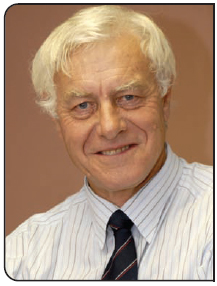Services on Demand
Article
Indicators
Related links
-
 Cited by Google
Cited by Google -
 Similars in Google
Similars in Google
Share
SA Orthopaedic Journal
On-line version ISSN 2309-8309
Print version ISSN 1681-150X
SA orthop. j. vol.9 n.1 Centurion Jan. 2010
MESSAGE FROM THE PRESIDENT
Orthopaedic training in South Africa
At a meeting convened by the College of Medicine in November last year, it was suggested that this country needs a 58% increase in the number of registrars presently being trained to achieve an acceptable ratio of 15 specialists to each 100 000 of the population by the year 2025. This will place enormous stress on all specialist training programmes, and orthopaedics is no exception.
Existing orthopaedic programmes are already under threat due to the prolonged neglect of teaching hospitals in favour of primary health care services. There is a lack of beds and theatre time, equipment and buildings are old and badly maintained, and facilities for modern orthopaedic techniques such as arthroscopy and arthroplasty are inadequate for training purposes. This discouraging situation is exacerbated by the collapse of specialist services in the regional hospitals, and the diversion of large numbers of emergency cases to the teaching hospitals where they are given priority over the elective work so vital for registrar training. Orthopaedic specialists and nursing staff are also in short supply, with no improvement after the two consecutive debacles of Occupational Specific Dispensation for health workers have eroded the little remaining credibility of the Department of Health.
Surgeons require unusual skills: in addition to the usual intellectual, ethical and diagnostic skills of any specialist, surgeons need manual skills that can only be acquired by constant exposure to the large variety of operations we are expected to perform. Without the opportunity to operate under close supervision of qualified specialists, in effect an apprenticeship, surgeons cannot be trained.
To compensate for this shortage of specialists in training posts, it appears that the HPCSA is contemplating an increase in the present ratio of surgical specialists to registrars from 1:2 to 1:3. The SAOA has already written to the Chairman of the Postgraduate Medical Committee of the HPCSA to state its strong opposition to this threat to the future standards of orthopaedic training.
What else can be done to maintain and improve our teaching system?
The first priority is to create and fund enough registrar posts to expand the training programmes; without that step nothing can happen. The second is to restore and expand the staff and facilities at the present training hospitals to allow them to do their work. Both measures are being blocked by provincial governments whose main priority is service delivery within a limited budget. There is, however, a possibility of training hospitals being removed from the control of provincial governments to the National Department of Health to help achieve these aims.
We would still need to find suitable applicants to fill the posts. Revitalising the regional hospital system would deliver a double benefit by providing a pool of potential candidates who have worked for a period as orthopaedic medical officers, while improving services at this level and reducing referrals to academic centres.
If there is a shortage of clinical material it is important to make the most of all training opportunities whether theoretical or practical, and the private sector must become involved in education as it is the repository of a wealth of orthopaedic knowledge. Case discussions at academic or branch meetings teach decision-making and can benefit many simultaneously, while assisting at private operations is an important way to learn the intricacies of surgical technique.
To promote clinical skills in junior registrars, the SAOA will start to offer registrar instructional courses this year, initially on clinical examination techniques, but extending later to basic trauma and elective surgical techniques.
Different departments have different areas of expertise; interchange of registrars or visiting fellowships should be encouraged to broaden exposure, and a registrar's fellowship has been recently created by the SAOA with this aim.
In the past, congress attendance has been largely limited to senior registrars. I believe that registrars in their last two to three years of training should also attend congresses so that they become familiar with the diversity of orthopaedics at an early stage, and the Department of Health should both allow and pay for this.
Access to teaching material has been revolutionised by the Internet, and the SAOA is looking at expanding the material already available on its website to all members.
The SAOA also intends to introduce an in-training examination for all registrars at the end of this year. The intention is to highlight deficits in each registrar's theoretical knowledge and show them how they compare with colleagues at a similar stage of training.
Finally the SAOA is in the process of organising a Registrars' Society as a sub-group of our Association, with a representative on the Educational Standards Committee to improve communication between trainers and trainees. This could be an important way for trainees to influence the teaching system and government policies on which they depend.
Expansion and improved efficiency of orthopaedic training programmes has become an urgent priority. The SAOA and its members need to develop strategies to transfer our skills to the next generation of our profession, and we have taken the first steps. We cannot influence government policies directly, but we can exert indirect pressure through our professional groups, and hopefully our registrars will create another voice to add to the clamour for a better deal for the teaching hospitals.

John Shiply
President: South African Orthopaedic Association














